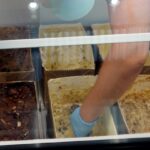The battle for Nebraska’s 2nd Congressional District hinges on voter turnout, as officials, party leaders, and voters all agree. Nebraska’s unique system of splitting its electoral votes creates a rare opportunity for parties to secure an extra vote in the presidential race, potentially influencing the outcome in a close election.
In this district, Democrats are striving to gain a vote for their candidate, while Republicans are working to maintain the support of the conservative population in the area. With a narrow margin between a blue or red outcome, both sides are focusing on mobilizing their base to secure victory not just in the 2nd Congressional District but also potentially in the entire Electoral College.
The district, which includes Douglas County, Sarpy County, and rural Saunders County, is a key battleground area due to its population size and political diversity. Recent polling data suggests an advantage for the Democratic presidential candidate in the district, with voter sentiment influenced by issues such as abortion and economic conditions.
As the election season heats up, both parties are intensifying their efforts to rally support and drive voter participation. With millions of dollars in advertising spending and a high-stakes battle for electoral votes, the outcome in Nebraska’s 2nd Congressional District could play a crucial role in determining the overall result of the presidential race. However, King emphasized that it is his responsibility to transmit the vote of the 2nd Congressional District to Harris. He stated that they will work diligently and strive to generate excitement among people.
The 2nd Congressional District has historically aligned with Nebraska’s Republican majority in six out of the eight presidential elections since 1992, despite notable departures to Democrats. Michael Tiedeman, the chairman of the Sarpy County Republican Party, mentioned that the county is predominantly Republican, with about 126,000 registered voters, including 56,000 Republicans, 34,000 Democrats, and 34,000 independents.
Republican voters in the area are driven by concerns about the economy, high inflation rates affecting the cost of living in the Omaha metro region, and what they perceive as an “open border” leading to an influx of illegal immigrants into Nebraska.
Local Republicans are focused on grassroots efforts to maintain the GOP’s traditional advantage in the region, given the lack of significant financial support. The Republican National Committee and Trump campaign have launched a joint initiative called Trump Force 47 to recruit local Republicans and mobilize them for voter outreach efforts.
Malia Shirley from the Nebraska Freedom Coalition emphasized the importance of canvassing and connecting with voters to increase conservative voter turnout in the upcoming elections. She highlighted the significance of addressing key issues that resonate with voters to secure victory.
Democrats in the area have rallied around the symbol of a blue dot as a sign of renewed energy for the party in a predominantly conservative region. King mentioned that the blue dot symbolizes a resurgence for local Democrats, originating from the district being colored blue on Electoral College maps in 2008.
The battle for the district is marked by Democrats using the blue dot symbol extensively, while Republicans respond with “red dot” signs featuring Trump’s signature hairstyle. The region is witnessing a divide in campaign strategies, with Democrats investing heavily in advertising, while Republicans prioritize grassroots mobilization efforts to secure victory in the elections.
“We’ve got a chance to do this again,” King said of the possibility of delivering an electoral vote to Democratic nominee Vice President Kamala Harris.
Tiedeman said the campaign is creative, but, “We can both play that game.”
Local Republicans are now putting up their own signs—portraying a red dot sporting Trump’s trademark coiffure.
Can you please rewrite this sentence? Please rewrite this sentence.
Source link





